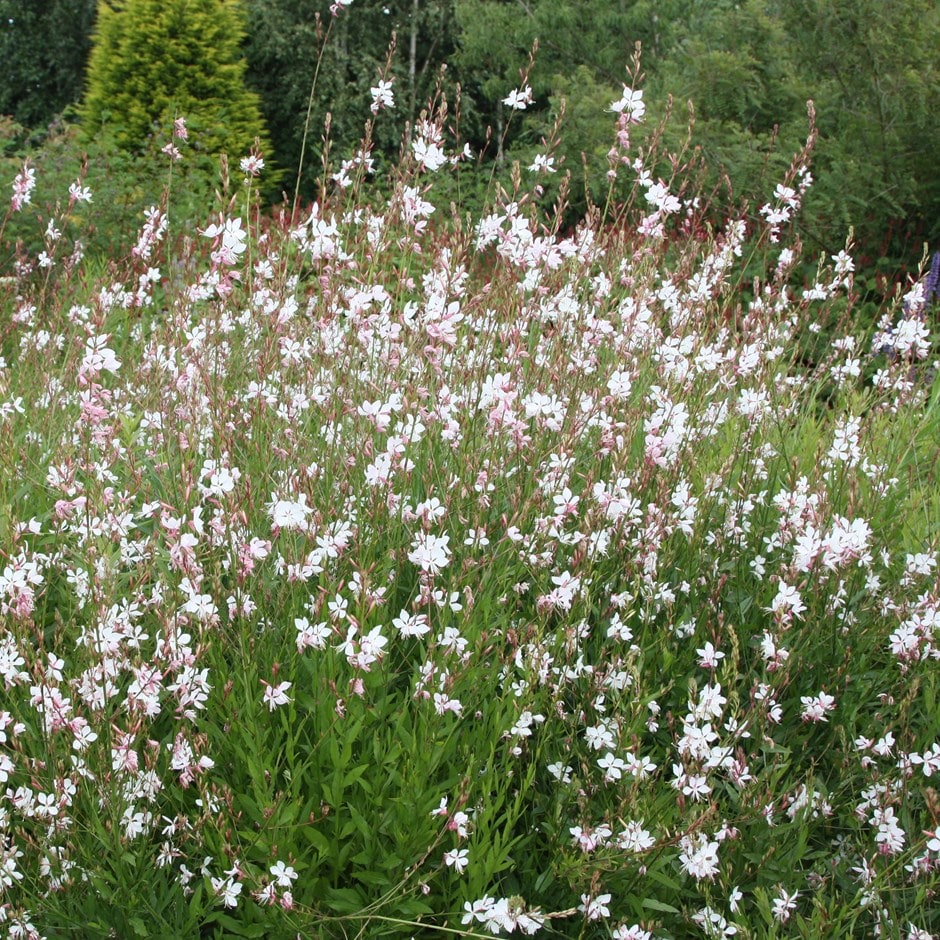The Enchanting Gaura: A Gardener’s Delight
Gaura, often referred to as “bee blossom” or “whirling butterflies,” is a captivating perennial that has become increasingly popular in gardens worldwide. Its delicate, airy appearance and long-lasting bloom add a touch of ethereal beauty to any landscape. This article delves into the fascinating world of Gaura, exploring its various species, cultivation tips, and the unique charm it brings to gardens.
A Glimpse into the World of Gaura
Gaura belongs to the Onagraceae family, which also includes evening primroses. Native to North America, these plants are known for their graceful, slender stems adorned with clusters of four-petaled flowers that flutter in the slightest breeze. The flowers, typically white or shades of pink, often have a subtle fragrance that attracts a variety of pollinators, including bees, butterflies, and hummingbirds.

Delicate Appearance: Gaura plants are characterized by their airy, graceful form, with slender stems and delicate, four-petaled flowers.
Popular Gaura Species and Cultivars
While several Gaura species exist, Gaura lindheimeri is the most widely cultivated. It exhibits a range of growth habits and flower colors, offering gardeners a variety of options to choose from. Some popular cultivars include:

’Whirling Butterflies’: This cultivar features large, white flowers that dance in the wind, resembling fluttering butterflies.
Cultivating Gaura: A Guide for Gardeners
Gaura is relatively easy to grow and thrives in well-drained soil with ample sunlight. Here are some essential tips for cultivating these enchanting plants:
Timing: Spring is the ideal time to plant Gaura.
Sunlight: Gaura thrives in full sun.
Deadheading: Regularly removing spent blooms encourages continuous flowering.
Mulching: Apply a layer of mulch around the base of the plants to protect them from frost during the winter months.
Designing with Gaura: Creating Stunning Landscapes
Gaura’s versatility makes it a valuable asset in various garden settings. Here are some inspiring ideas for incorporating Gaura into your landscape:
Border Plantings: Gaura adds a graceful touch to perennial borders, creating a dynamic and eye-catching display.
Addressing Common Challenges
While generally easy to grow, Gaura may occasionally encounter certain challenges:
Powdery Mildew: This fungal disease can affect Gaura, especially in humid conditions. Proper spacing and good air circulation can help prevent powdery mildew.
The Enchanting Appeal of Gaura
Gaura’s unique combination of beauty, resilience, and low-maintenance care has earned it a well-deserved place in the hearts of gardeners worldwide. Its delicate flowers and graceful form add a touch of magic to any landscape, while its ability to attract pollinators benefits both the garden and the environment. By incorporating Gaura into your garden, you can enjoy a stunning display of color and movement throughout the growing season.
This comprehensive guide should provide you with a thorough understanding of Gaura, empowering you to successfully cultivate these enchanting plants and enjoy their beauty in your own garden.
